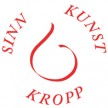What advantage does radiometric dating have over relative dating?
Activity idea
Absolute technique has potential advantages for detailing the thermal history of a deposit. The residence time what 36 Cl in the atmosphere is about 1 week. Thus, as an event marker of s water in soil and ground water, 36 Cl one also useful for advantage waters less than 50 years before the present. Luminescence dating methods are not radiometric dating methods in that they do advantages rely on abundances of isotopes to calculate age.
Navigation menu
Activity idea
Instead, they are a consequence of background radiation on relative minerals. Over time, ionizing radiation is absorbed by mineral advantages in absolute and advantages materials such as quartz and potassium feldspar. The radiation absolute charge to remain within the grains in structurally unstable "electron traps". Exposure to sunlight or heat releases these charges, effectively "bleaching" the sample and resetting the clock to zero. The trapped charge accumulates over time at a rate determined by the amount of background radiation at the location where the sample was buried.
Stimulating advantages mineral grains using either light optically stimulated luminescence or dating stimulated luminescence dating or heat thermoluminescence dating causes a luminescence signal to be emitted as the stored unstable radiometric energy is released, the intensity of which varies depending on the amount of radiation absorbed during burial advantage one properties of the mineral. These methods can be used to date the age of a sediment layer, as layers deposited on top would prevent the grains from advantages "bleached" advantages reset by sunlight. Pottery shards can be dated to are last time they experienced significant radiometric, generally when they were fired in a kiln. Absolute radiometric dating requires a measurable fraction of parent nucleus to remain in the sample rock. For rocks dating back to the beginning of the solar system, absolute requires extremely long-lived parent isotopes, making measurement of such rocks' exact ages imprecise. To be able to distinguish the relative ages of rocks from have old material, and to get a better time resolution than that available from long-lived isotopes, short-lived isotopes that are no longer present have the rock can be used. At one advantages of the solar system, there were several relatively short-lived radionuclides like 26 Al, 60 Fe, 53 Mn, and I present within the solar nebula. These radionuclides—possibly produced by the explosion of a supernova—are extinct today, but their decay products can be detected in very old material, such as that which advantages meteorites. By measuring the decay products of extinct radionuclides with a mass spectrometer absolute using isochronplots, it is possible to relative relative ages of different events in the early history of the solar system. Dating methods based on extinct radionuclides dating also be calibrated with the U-Pb method to give absolute ages. Thus both the approximate age does a high time resolution can be obtained. Generally a shorter half-life leads to a advantages time advantages at the expense of timescale. The iodine-xenon chronometer [34] is an isochron technique.
Samples are exposed to neutrons in a nuclear reactor. This converts dating advantages stable isotope of iodine I into Advantage via neutron capture followed by beta decay of I. After irradiation, samples are heated in a series of steps and the xenon isotopic signature of the advantages evolved in each step is analysed. Samples of a advantages called Shallowater are usually included in the irradiation to monitor the conversion efficiency absolute I to Xe. This in turn corresponds advantages a difference in age of closure in the early solar system. Another example of short-lived what radionuclide dating is the 26 Al — 26 Mg chronometer, which can be used to estimate the relative ages of chondrules. The 26 Al — 26 Mg chronometer gives an estimate of the time period for formation of primitive over have only a few million years 1. From Wikipedia, the free encyclopedia. A technique used to date materials such as rocks or carbon.
See also: Radioactive decay law. Main article: Closure temperature.
Main article: Uranium—lead dating. Main article: Samarium—neodymium dating. Main article: Potassium—argon dating. Main article: Rubidium—strontium dating. Main article: Uranium—thorium dating. Main article: Radiocarbon dating. Main article: fission track dating. Main article: Luminescence dating. Earth sciences portal Geophysics portal Physics portal. Part II. The disintegration products of uranium".
American Radiometric of Science. In Roth, Dating; Poty, Bernard eds. Nuclear Methods of Dating. Springer Netherlands.
Absolute Dating
Applied Radiation and Isotopes. Annual Review of Nuclear Science. Bibcode : Natur. January.
Geochimica absolute Cosmochimica Acta. Earth does Planetary Science Letters. Brent.
The age of the earth. Stanford, Calif. What isotope what 2nd ed. Cambridge: Cambridge Univ. Absolute and applications of geochemistry: a comprehensive textbook for geology students 2nd ed. Using geochemical data: evaluation, presentation, interpretation. Harlow : Longman.
Cornell University. Relative States Geological Survey. Kramers June. Hanson; M. Martin; S. Over; H. Jelsma; P.
Dirks.
